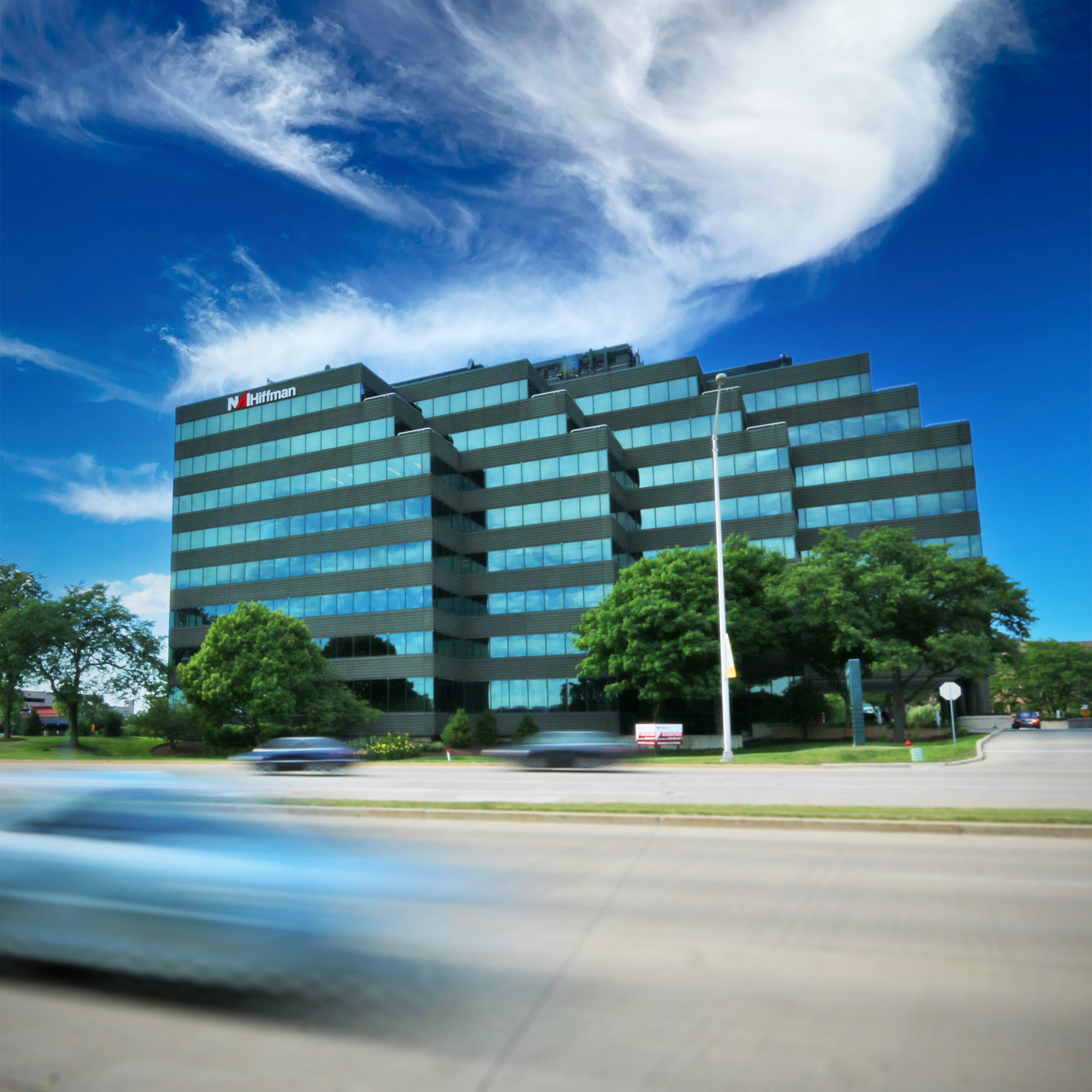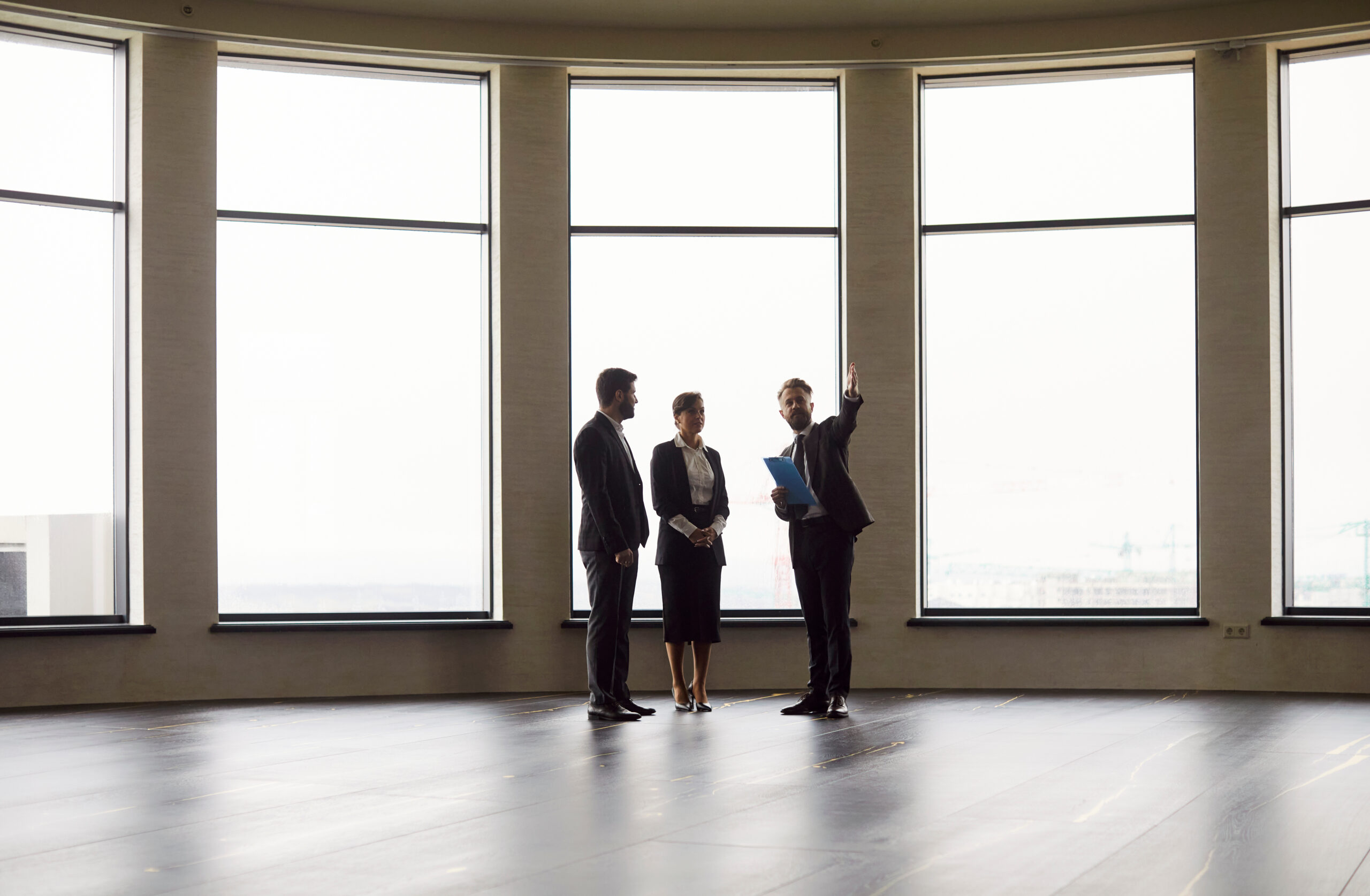August 2024
What’s Your Wellness Action Plan?

The drive to foster “wellness” at commercial properties can seem daunting, especially when the definition’s so broad.
While office properties, especially more exclusive ones, are often the focus when talking wellness, that needn’t necessarily be the case. “We don’t want this to just be a Class A office product, we want this to be a product for retail, medical, office, industrial and office buildings,” said Szarzynski. Hiffman’s wellness app, which launched in July, offers sudoku, a book club, online classes, desk exercises and walking challenges. Traveling tenants can even book desk or office space at the company’s properties in other cities.
At their best, wellness-focused endeavors seek to strike a balance. Physical fitness is a focus, but so is mental health. Lighting and design are important considerations, but so is measurable air quality. Spa-like amenities have become an option, but so has improving access to routine, but necessary, medical procedures. In short, the wellness space is getting more serious.
Facilitating medical access
Priority wellness should focus on “full wellness”, a balance between mental, physical and social well-being, according to Carrie Szarzynski, senior managing director & head of management services at property manager Hiffman National.
Hines offers things such as health screenings, on-site vaccinations, eye exams and mammograms at its properties, said Whitney Burns, senior vice president of Hines’ global client strategy team. The mammograms are made possible by bringing in a fully equipped bus. “They can come, they can park and that makes a big difference in people’s lives. It’s something that people put off, that they don’t really want to do—but if it comes to you, it’s hard to have an excuse.”
Health plans are, of course, the domain of people’s actual employers, but owners and property managers can also play a role, partnering with end users to make sure they can provide things that will make a difference to their tenants’ employees.
And it needn’t all be so serious. Hines also offers on-site manicures, and even Botox, at its properties. “If you do the flashy stuff, that’s great,” mentioned Burns. “But before you do the flashy, you need to make sure you’re doing the basics well so that people feel cared for.”
All aspects of physical fitness
In commercial, especially office buildings, gyms have existed as amenities for decades. And they’re often underused. However, facilities manned by operators tend to have better utilization rates, especially when there are group classes.
While properties can schedule fitness classes, tenants can book space for their own employee offerings, mentioned Samantha McCormack, managing executive at TPG Architecture. Having access to bookable space is a boon for a company that would otherwise need dedicated fitness space, allowing it to reduce its footprint.
Unique settings for classes are also a plus, meaning a property-run workout doesn’t necessarily need gym space. Lobbies, conference rooms and outdoor spots are often popular alternatives. Personal training offerings have long been popular, with sessions focusing on sports training and injury prevention becoming increasingly sought-after. Part of this is due to the advent of pickleball, said Szarzynski. “Everybody is looking for training that will prevent them from getting hurt. That’s really different.”
Staples such as basketball courts and pools remain major draws, but even the use of pools is being rethought, from more traditional water aerobics to paddleboarding.
The design behind the new breed of gyms is leading to the creation of a spa-like environment, pointed out McCormack, with Peloton bikes, yoga studios and the ability to bring in barre classes.
Beyond the concept of a gym, some Hines properties now aim to provide “recovery zones,” said Burns, offering therapeutic massage guns, compression sleeves and massage chairs. Physical trainers also help with stretching exercises. “I think we’re going to start seeing a lot more things such as infrared saunas and plunge pools coming on-site. I don’t know that the plunge pools will be as popular at office as with residential, but the infrared sauna is a relatively small investment for a really meaningful amenity.”
The new frontier of gym wellness isn’t likely to stop here, though.
Diet is also a component of the emphasis on physical fitness, McCormack added. “I would say the biggest features that we’re seeing are things that focus on whole-body being,” which she explained extends to healthy food at on-site eateries and partnerships with health food restaurants. Some properties even have experimented with onsite nutritional counseling and lunch-and-learns, where people can ask questions of a registered dietitian.
Psychologically focused offerings are also increasing in popularity. These include online zooms with mental health professionals, meditation, yoga and even sound baths and scenting.
The gift of time
Having an on-site fitness center is a major asset to commercial tenants, and not only by avoiding fees.
Research has shown that a healthier environment helps with hiring and retention, in turn making properties more attractive to investors, NAIOP, the Commercial Real Estate Development Association, has found.
“If people are coming to the office and if they have access to a free or subsidized fitness center, that saves them a lot of time and money of driving to a different fitness center and paying for another membership,” remarked Burns. “Saving people a lot of time and money adds value to the workplace.”
Time-saving wellness features are rarely flashy but can make a big difference in people’s work-life balance.
“I’m a mom with two young kids, so while I would love to do the rooftop yoga and charcuterie, I also want to go home and see them,” pointed out Burns. “So, what adds value to me, personally, are these things that make me more efficient at the office, not just for work, but for life.”
This can range from gym access to grocery delivery. Hines recently partnered with Instacart to offer grocery deliveries to their tenants’ employees on-site.
Burns noted that one of Hines’ most popular on-site services is arranging TSA Global Entry interviews onsite.
“That’s not an Instagrammable moment, but boy, does it mean a lot to people, because it saves them a trip to the airport, the interviews right on site. Things like that I think of as wellness because it helps reduce stress. Anything you can do to reduce stress and quiet the noise is really meaningful for people’s mental health.”
App help
Wellness apps have completely changed the game. First, they help property managers keep people up to date on events at their properties without going through intermediaries.
“We now have this direct communication with the individual user, and we just really didn’t have that before,” said Burns. “A lot of the communication would go from our property management office to the facility manager of a tenant floor and then it would be dispersed from them.”
While office properties, especially more exclusive ones, are often the focus when talking wellness, that needn’t necessarily be the case. “We don’t want this to just be a Class A office product, we want this to be a product for retail, medical, office, industrial and office buildings,” said Szarzynski. Hiffman’s wellness app, which launched in July, offers sudoku, a book club, online classes, desk exercises and walking challenges. Traveling tenants can even book desk or office space at the company’s properties in other cities.
Designing a healthy, sustainable workplace
A focus on wellness hasn’t transformed the property management business yet, though many companies are incrementally adapting along these lines, responding to demand.
Some small moves have become routine, including planting native plants that don’t need to be replaced annually and adding beehives to buildings. “Everybody’s doing that, that’s not new,” pointed out Szarzynski, though she predicted that wellness-centric demands will continue to accelerate. Property managers have also gotten on board with plentiful natural lighting and access to outdoor spaces.
More biophilia was found to create a 5.6 to 7.8 percent rent premium for offices in New York City, according to a 2022 report from the International WELL Building Institute. The same report noted there is a 5 to 6 percent rent premium for commercial spaces with high levels of daylight in New York City: “Windowless environments negatively affect workers’ productivity and sleep.”
And while biophilia is gaining ground, more subtle touches add to the feel-good whole. McCormack said: “I keep saying that everybody just wants a really big hug after the last four years, so we’re seeing shapes of furniture returned to things being softer curves—tables that, instead of being a rectangle with a sharp corner, starting to have a small radius angle, something that is softer, more approachable.”
There is a trend toward lounge settings and common areas with comfortable furniture, though these areas need to ensure they are equipped with sufficient electrical outlets. More textiles and soft materials are also being incorporated into furniture bases. Properties are seeking out furniture that is more sensory, tactile and soft, though durability remains a priority. “Because it’s in a corporate environment, it has to withstand people kicking in constantly.”
Air quality also remains vital, and while pursuing LEED or WELL certification is still valuable, McCormack noted that many companies are moving beyond a plaque when showcasing their green bona fides. Some properties even allow tenants to monitor indoor air quality and carbon dioxide levels on digital screens.
About NAI Hiffman:
NAI Hiffman is one of the largest independent commercial real estate services firms in the US, with a primary focus on metropolitan Chicago, and part of the NAI Global network. We provide institutional and private leasing, property management, tenant representation, capital markets, project services, research, and marketing services for owners and occupiers of commercial real estate. To meet our clients’ growing needs outside of our exclusive NAI Hiffman territory, we launched Hiffman National, our dedicated property solutions division, which provides property management, project services, and property accounting services across the country. NAI Hiffman | Hiffman National is an award winning company headquartered in suburban Chicago, with more than 250 employees strategically located throughout North America.
About Hiffman National:
Hiffman National is one of the US’s largest independent commercial real estate property management and advisory firms, providing institutional and private clients exceptional customized solutions for property management, facility management, advisory services, accounting, lease administration, lender services, project management, marketing, and research. The firm’s comprehensive property management platform and attentive approach to service contribute to successful life-long relationships and client satisfaction. As a nationally recognized Top Workplace, and perennial CRE award winner, Hiffman National is headquartered in suburban Chicago, with more than 275 employees nationally and an additional four hub locations and 15 satellite offices across North America.


